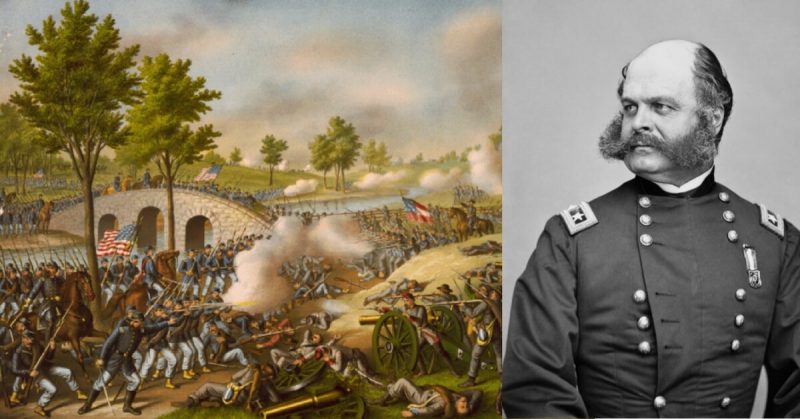What do a rifle, various railroads, the American Civil War, the Franco-Prussian War, the National Rifle Association, and sideburns have in common? Here is the answer.
Ambrose Everett Burnside was a man with a flamboyant sense of style. He was born on May 23, 1824, in Liberty, Indiana. He attended Liberty Seminary for priests, but such a future was not for him. Instead, he apprenticed to a tailor, a match made in heaven as he had a flair for grooming. He eventually became a partner in the business.
Burnside developed facial hair rather early; possibly to make up for his balding head. He also developed an interest in military affairs, perhaps due to his expertise in fashion and obsession for grooming.
He attended the US Military Academy in 1843 graduating four years later, 18th out of 47. He received a commission as a brevet Second Lieutenant with the 2nd US Artillery. Then he went off to join the Mexican-American War, arriving too late for the fight.
Burnside was transferred to the 3rd US Artillery to protect the mail routes between Nevada and California. In 1849 in Las Vegas, New Mexico an Apache arrow found his neck. In December 1851, he was a 1st Lieutenant, and by October 1853, he quit the military to develop the Burnside carbine and founded the Burnside Arms Company.
In 1858 he ran for a Congressional seat in Rhode Island. He lost by a landslide. Worse, a fire destroyed his factory. He then became the treasurer of the Illinois Central Railroad. It was while there he became close friends with George Brinton McClellan; the man who would become his commanding officer.
In 1861, the American Civil War broke out. Burnside returned to the military as a Brigadier General in the Rhode Island Militia. It was he who created the 1st Rhode Island Volunteer Infantry Regiment, becoming its Colonel and arms supplier.
From there he moved on to command the brigade of the Department of Northeast Virginia which saw action at the First Battle of Bull Run in July. Despite his shining bald head and impressive sideburns (a fashion named after him), they served with no distinction.
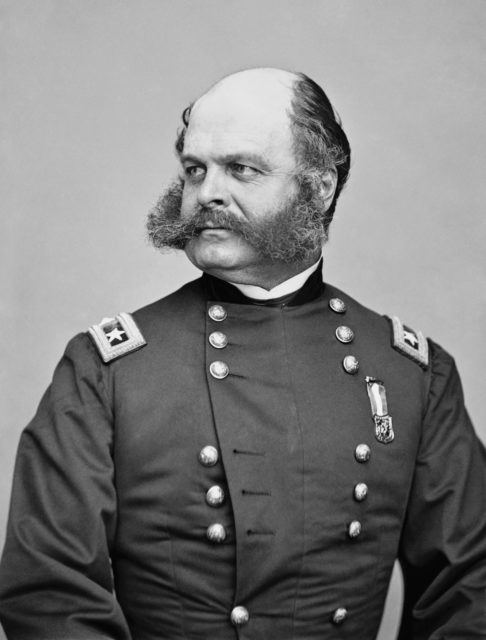
By August 1861 he was training the new Army of the Potomac. From September until July 1862, he led the naval operation along the North Carolina seacoast. They blockaded some 80% of Confederate shipping until the end of the war.
It was also he who led the successful Burnside Expedition which destroyed the Confederate fleet in 1862. His victories at Roanoke Island and New Bern were also among the first significant Union victories in the Eastern Theater. He was now a Major-General. Unfortunately, it all went downhill after then.
McClellan lost the Peninsula Campaign which left President Abraham Lincoln fuming. He asked Burnside to take over. Out of respect for his friend, Burnside refused. Major General John Pope then lost at the Second Bull Run. Again the President asked Burnside to take over, but Mr. Sideburns again said “no.”
Instead, he took command of the Right Wing of the Army of the Potomac and set off for the Maryland Campaign’s Battle of the South Mountain. His strict observance of protocol and inadequate reconnaissance resulted in the slow attack and crossing of a bridge at the Battle of Antietam.
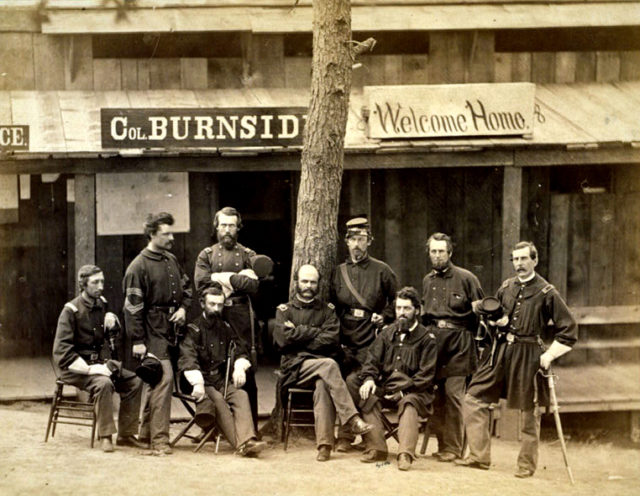
Although a Union victory resulted, it was tactically inconclusive. Worse, it was the deadliest single-day battle in American history. McClellan was removed.
Burnside was again asked to take over and again refused. He was advised Major General Joseph Hooker would be offered the job. Burnside disliked Hooker, so he reluctantly took the up the offer.
Lincoln then ordered him to take Richmond, Virginia – the Confederate capital. The result was the Battle of Fredericksburg which ended with a disastrous Union loss. Mr. Sideburns tried to make up for it by launching more assaults with even more losses, earning a new name; the Butcher of Fredericksburg.
He tried to resign, but his offer was turned down. In January 1863, he went after Confederate General Robert E. Lee. It was bad timing as the snow had turned to rain and it became known as the Mud March. They never even got close to Lee.
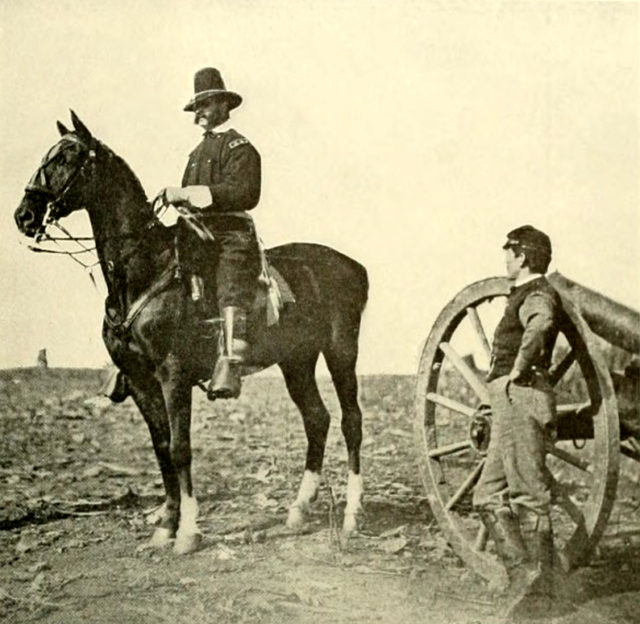
He again offered to resign. Lincoln refused but handed command over to Hooker. Burnside was instead put in charge of the IX Corps responsible for Ohio, Indiana, Kentucky, and Illinois. Being quiet states, it was thought he could do no harm there.
They were wrong. Those states had long profited from trade with the South, saw nothing wrong with slavery, and were, therefore, anti-war and anti-Lincoln. Burnside’s response was to prosecute anyone who spoke out against the regime and threaten them with either banishment or jail.
The situation came to a head in May 1863 when Ohio Congressman Clement L. Vallandigham held an anti-war rally. Burnside sent him to prison. When the Chicago Times criticized the war, Mr. Sideburns closed them down. Burnside had gone too far. Lincoln ordered the newspaper to be reopened.
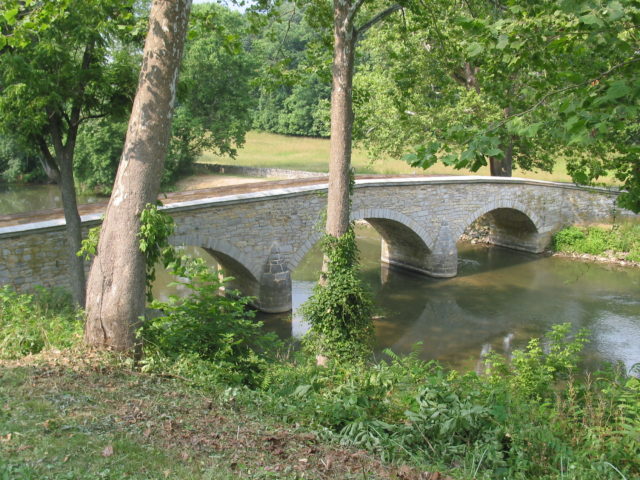
Shortly after, Lincoln ordered him to take Knoxville, Tennessee. Burnside had secured the railroads around the city by mid-June, then attacked and occupied it in mid-August.
Mr. Sideburns fought in other battles until the Siege of Petersburg, which started out well. On July 30, 1864, Union forces detonated a mine outside the city, creating a crater and gap in its defenses. However, poor communication and contradictory orders from various commanders led to the slaughter of a company of Burnside’s men.
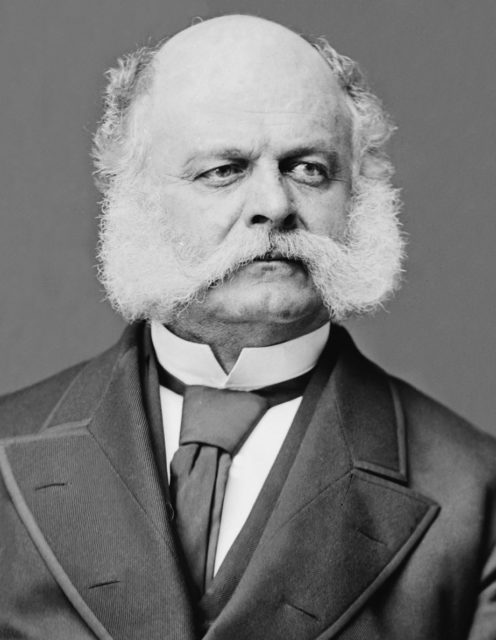
On August 14, General Ulysses S. Grant ordered Burnside to go on “extended leave.” He then worked for various railroads, did three one-year stints as the Governor of Rhode Island, tried to mediate between the French and Germans during the Franco-Prussian War in 1870, and became the first President of the National Rifle Association in 1871.
He later became the Senator for Rhode Island in 1874 and again in 1880, proving himself to be more capable in peace than in war; and memorable for his sideburns.
